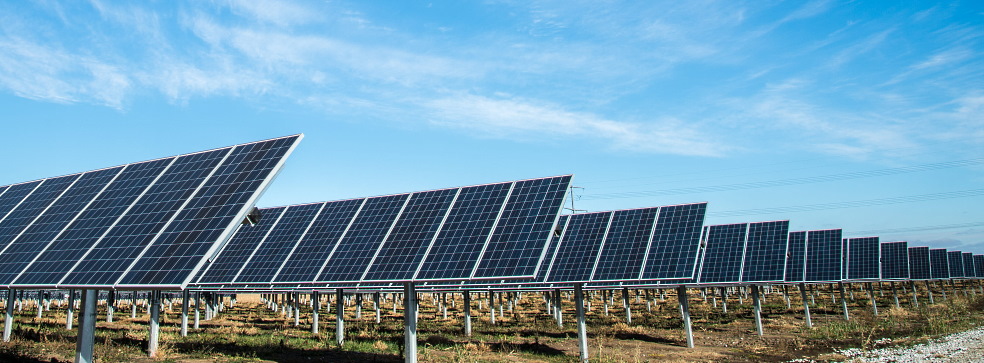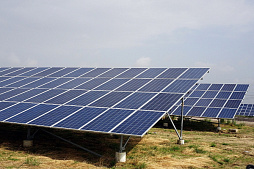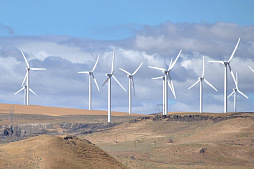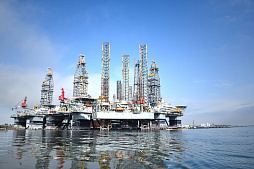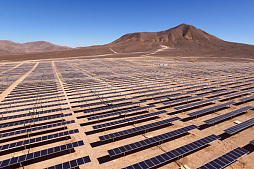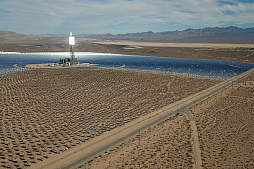To consider an application for financing, fill out the form and send it to us by e-mail along with the project brief, or contact our experts
Solar energy is becoming increasingly competitive due to cost reduction and constantly improving technology.
Further development of solar energy generation is becoming more attractive, especially in fast developing countries with favorable natural conditions. In addition, social and political factors contribute to the widespread use of renewable energy.
Solar energy has proven its viability and has demonstrated some advantages over traditional energy sources such as coal.
Growing knowledge and new technologies make solar power plants more and more efficient and cost-effective. It is not surprising that solar plant construction services are gaining popularity among investors.
Many countries have tremendous solar resources and economic opportunities to develop this innovative sector.
Photovoltaic power stations can be built just in a few months, which is an additional incentive for growing economies.
Thanks to closer attention to environmental laws and more stringent requirements for energy security, many governments, not just private investors, have become interested in solar power.
Knowledge and experience help to increase the potential of solar energy and satisfy the energy needs of international clients in the most efficient way.
Solar project development process
The construction of a solar (photovoltaic) power station begins with the development of a project.Solar energy project development is a multi-stage process that requires a multidisciplinary team of experienced professionals from different areas. At this important stage, our engineers and financial consultants assess the potential of energy generation, choosing the best location and the most efficient technology for your individual needs.
The local electricity market is carefully analyzed, and also look for a suitable land plot for the construction of the facility.
Specialists conduct a feasibility study of the project, as well as obtain permits and provide agreements on connecting to the grid.
Typical steps for developing a solar energy project:
• creating a concept;
• finding a plot of land;
• detailed prefeasibility study;
• feasibility study of the project;
• obtaining permits and contracting;
• engineering and construction;
• testing and commissioning;
• operation and maintenance;
• modernization.
Our approach to each project is individual, depending on the goals and priorities of the investor, financing, legal requirements and other factors. As a result, we develop a conceptual project that best meets client expectations.
At this stage, you do not need to invest heavily in the implementation of the project.
Prefeasibility study of solar plant
The purpose of the preliminary feasibility study is to determine the general characteristics of the project and the amount of investment.Based on the report, the investor can draw conclusions about the viability of the project, as well as the need to invest additional resources. All studies at this stage are conducted under conditions of uncertainty, which should be considered by all stakeholders.
Prefeasibility study includes:
• projected electricity prices;
• assessment of the area of the building site;
• comparison of various technological solutions and their consequences;
• projected financial costs and potential income of the solar energy project;
• assessment of the capacity of a solar power plant, taking into account seasonality;
• the possibility and conditions of connecting the power plant to the national grid;
• preliminary schedule of design and construction process;
• assessment of economic, political and legal risks of the project;
• assessment of social and environmental risks;
• modeling the situation for a final decision.
At this critically important stage, we determine the range of opportunities and probable obstacles, developing the most effective solution for the client.
Feasibility study for a solar power plant
The most important thing for an investor is a professional feasibility study, which includes the characteristics of the facility, the applied technical solutions, as well as the financial costs of its construction, operation and maintenance.The feasibility study phase is always based on the results of previous work, using more accurate information for a specific project. If the results are favorable, the client should be ready to invest more funds to advance the project.
A typical feasibility study contains a detailed summary of the technical, regulatory, financial and commercial aspects. Solar power plant construction services require a thorough analysis of all the factors that may affect the success of the project.
A feasibility study for a solar power plant includes:
• development of a detailed land plot plan;
• assessment of potential solar resource in the construction area;
• identification of environmental factors that may affect project implementation;
• detailed study of environmental, social and political aspects;
• detailed list of required official permits and licenses;
• cost and conditions of connecting the solar plant to the grid;
• additional assessment of the cost of electricity;
• analysis of sources of financing for the construction of a power plant;
• final concept of the commercial structure of the project;
• detailed financial analysis.
The feasibility study may coincide with the activities related to obtaining permits, financing and contracts. A coordination of these activities is essential to the success of the solar energy project.
Small projects may be limited to calculating the basic characteristics of a solar power plant and its key equipment.
Engineers always take into account the needs of a particular client, so the documentation is compiled in accordance with the goals, scope and budget of your project.
Together with partners, we take into account the experience of previously financed and designed facilities, providing the investor with optimal technical and economic solutions.
Obtaining construction permit
After a positive decision on the basis of a feasibility study, we receive permission from the local authorities for the construction and operation of the solar photovoltaic power station. This is the most important step to ensure project financing and commercial contracts.Obtaining official permits is a key part of our solar plants construction services.
Legal requirements vary from country to country, which is why our lawyers begin negotiations with authorities in the early stages of the project. The latency and specific requirements for supporting documentation depend on the location, capacity and type of facility. In some cases, changes to the original design are required to obtain permits.

Solar project financing
Financing solar power plants is basically the same as financing other energy projects, but there are risks specific to the industry.These risks are mainly associated with new and insufficiently studied technologies, as well as possible changes in government policy.
Banks are interested in the predicted performance of the future power plant. One of the key indicators is the annual production of electricity, which is achieved with a probability of 90% (P90). Having an independent expert opinion will ensure creditors confidence, helping to attract investment in a solar energy project.
In order to receive financing, specialists prepare complex project documentation. Currently, solar energy is not well known to banks in developing countries, so the client should make some efforts and spend time on obtaining a loan.
It is very important to find a reliable source of project financing. Our offer provides customers with the most favorable financial conditions for the implementation of a solar energy project.
Engineering and design of solar power plants
When permits are received and project financing is approved, the team of company engineers proceeds to detailed technical documentation.This documentation is presented in a clearly organized manner and it is always available to all interested parties.
All electrical circuits are carefully designed, including equipment for grid connection and protection. Particular attention is paid to elements of civil engineering, including foundations, buildings, access roads and other infrastructure. Experience suggests that professional design saves significant financial resources in the future.
Solar power plant construction
Our company provides a full range of services for the financing and construction of solar power plants.A client gains an advantage by working with only one contact person who is responsible for coordinating all processes and adhering to the work schedule.
Upon completion of the construction, we carry out all the tests of the performance and reliability of the solar power station specified in the contract. After the successful completion of the tests, company provides the client with all the documentation, including a detailed description of the design, drawings, operation protocols and so on.
We are actively engaged in the operation and maintenance of solar power plants. Our experienced engineers can also train your personnel in accordance with modern international standards.
Construction management
A solar power plant construction management should be consistent with the general good practice of managing construction projects. The specific approach will depend on the characteristics of the project and a number of other factors.The vast majority of large solar photovoltaic power plants are being built using a fully protected EPC (engineering, procurement and construction) contract. In this case, the company responsible for the construction takes on maximum responsibility.
An EPC contract will be significantly less burdensome for the investor, since he does not need to control several small contractors. EPC transfers risks to the contractor, although in most cases this approach is more expensive.
Planning and construction stages
A realistic and comprehensive plan for the construction of a solar power station is vital for the successful and timely implementation of the project at no additional cost.The plan should contain the following information:
• construction goals and duration;
• possible risks and restrictions at any stage;
• key stages and dates of their completion;
• priorities and the relationship between all stages;
• parties responsible for implementation;
• actual construction progress.
All tasks, milestones, and expected completion dates should be detailed along with any restrictions for a specific task.
If it is predicted that permits or weather conditions can slow down construction in certain months, this should be noted.
A solar plant construction plan should include:
• design;
• purchase of equipment;
• preparation and access to the construction site;
• ensuring the safety and security of the site;
• construction of the foundation;
• installation of metal structures;
• installation of photovoltaic modules;
• construction of substations;
• electric installation work;
• electrical connection;
• testing and commissioning.
Each of these tasks should be divided into a series of subtasks.
The plan should be developed in such a way as to detail all the related tasks, guaranteeing their implementation on time.
Construction plan should take into account the risks of each subtask and contain measures to minimize them.
This will save time and resources in case of unforeseen circumstances.
Any factors that may prevent or limit the effective execution of tasks should also be considered. Among these factors, experts distinguish:
• access to the construction site;
• the availability of resources, including production facilities and labor;
• the stage of training the workforce when working in new markets;
• obtaining permits and other regulatory restrictions;
• facility security considerations;
• access to the power grid.

The construction plan will indicate the start date of certain tasks and highlight the critical path for the implementation of the interconnected stages of solar plant construction.
A comprehensive plan should also consider the availability of resources. This will ensure that the necessary personnel or components of the solar power plant are available.
For example, when it is planned to supply electricity to the national power grid, the company must design and build a large substation in accordance with the requirements of the energy company and the specifications of the agreement.
The date of connection to the power grid will be planned in advance. If the contractor misses the date, there may be delays that have a significant impact on the construction and commissioning of the solar plant.
The inclusion of a procurement schedule for components with a long production time (for example, transformers, inverters and PV modules) will ensure their timely delivery.
The plan will also cover any problems associated with the delivery and construction dates. Engineers must prepare all conditions for storing expensive equipment at a construction site.
To save time for all interested parties, it is better to use a ready-made project planning package and check the plan. Our specialists continuously receive and analyze information from the construction site to avoid any delays and additional costs.
Risk management and EPC contract
Throughout the construction of the solar plant, we continuously identify, evaluate and manage the risks associated with your project.The next step is to develop an appropriate action plan to minimize the risks identified. If a specific risk may affect the implementation of the project, possible alternatives are being worked out.
Elements of risk may include:
• weather conditions;
• network connection delays;
• lack of qualified personnel;
• delays in the supply of equipment;
• problems with transport;
• soil condition at the construction site;
• incidents and so on.
Many of these risks will be mitigated during the planning and design phase.
Some risks remain until all equipment is in place. For example, equipment may be damaged or lost during transport. This risk is reduced by choosing an experienced supplier and suitable transportation equipment.
Insurance will cover the cost of replacing equipment. However, with the loss of key components such as a network transformer, insurance does not compensate for time delays and loss of power generation. Such risks should be considered when developing the terms of an EPC contract.
Quality control
Construction quality control is essential to the success of a solar energy project.The required quality level should be clearly defined in the contract specification.
The quality plan is a review document that describes in detail all the stages of work and tests that must be performed within the project.
This helps the contractor to complete the work properly, and also gives the investor the opportunity to evaluate the quality.
A quality plan usually includes the following information:
• detailed project goals;
• responsibilities of the contractor for the acceptance of equipment;
• estimated completion dates for each construction phase;
• detailed test results, photographs and other information.
Quality audits are carried out regularly so that the customer can be sure that the work is carried out in accordance with the quality plans. Audits also identify quality issues that need to be addressed at an early stage.
Construction safety management
The health and safety of employees is carefully monitored by our specialists. In addition to ethical considerations, fines for non-compliance can pose a serious risk to the project.In addition, a solar energy project with a well-thought-out approach to health and safety is more likely to receive international funding.
General safety management guidelines include:
• solar plant design;
• maintenance and operation;
• employee interaction and training;
• personal protective equipment;
• hazardous environments;
• biological hazards;
• physical hazards;
• chemical hazards, etc.
The experience in building solar stations shows that falls from a height, electric shocks, incidents related to lifting equipment and traffic accidents are the most common causes of worker injuries.
Environmental, health, and safety (EHS) specialists will create tailor-made recommendations for your project with adequate requirements for every aspect of the work.
Construction of buildings and structures
In general, the construction of buildings and structures for a solar photovoltaic plant is relatively simple. However, miscalculations in the design of access roads and infrastructure often cause significant complications, delays and additional costs.The main risks are usually associated with the condition of the soil at the construction site. Inadequate soil survey reports that do not contain sufficiently detailed information can lead to incorrect foundation design.
Typical risks include:
• gases and leachate from former landfills;
• highly contaminated land as a result of industrial activity;
• unexploded ordnance and other potentially dangerous objects;
• tunnels, catacombs or other objects not plotted on the site plan.
Due to the nature of the excavation, digging or driving piles for foundations, it is very important to know about dangerous obstacles below ground level.
This is especially true when the construction of a solar plant is carried out on industrial facilities and military bases.
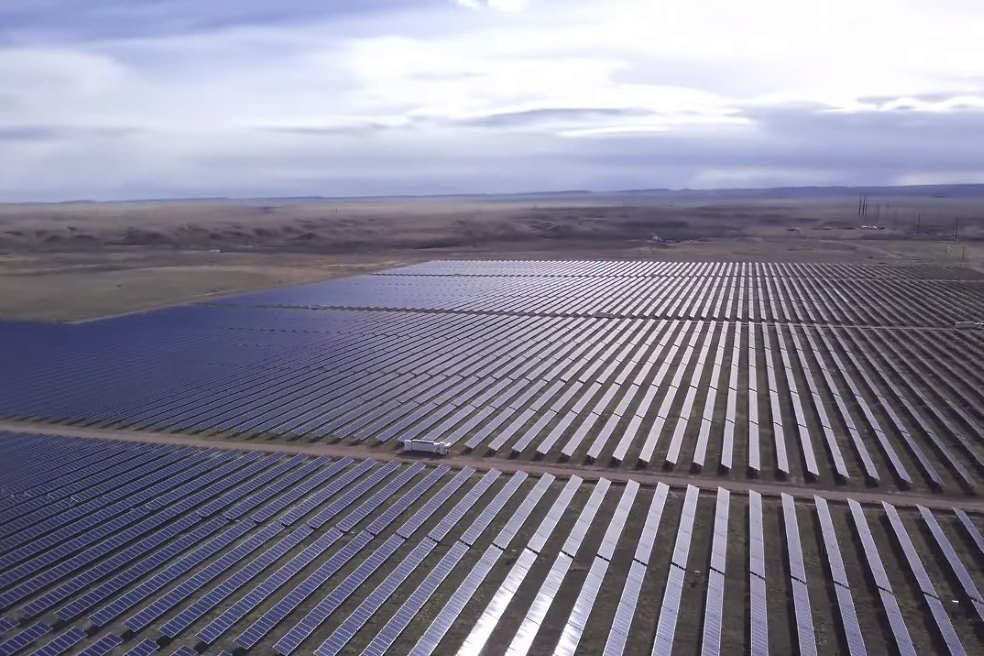
Installation of steel structures for a solar plant
The stage of installation of steel structures includes the assembly and installation of supporting frames for photovoltaic modules and other equipment of the station.Some common mistakes at this stage can be very expensive:
• misuse of installation tools;
• lack of necessary cross mounts;
• incorrect application of anti-corrosion coatings;
• incorrect orientation of structures;
• misalignment of some elements;
• improper installation of tracking systems;
• insufficient space for rotation of the modules;
• inefficient fixation of photovoltaic modules, etc.
Such mistakes affect the energy production and equipment durability. Often they cause emergency situations.
Entrusting the installation of steel structures to experienced LBFL specialists, you protect the business from additional costs.
Cables and electrical equipment should be installed in accordance with the manufacturer's recommendations. Electrical work must be carried out with caution, as damage can occur when pulling or bending the cable. Cables attached to the mounting structure require proper protection and fixation to ensure normal operation and long equipment life.
Underground cables between the solar modules must be laid at a safe depth, with the appropriate marking. Cables are laid in cable channels or protected by a layer of sand to avoid damage during backfill. Before turning on the power, it is necessary to conduct comprehensive tests to make sure that there are no damage to the cables.
We understand that electrical standards in emerging markets are only being updated or have been recently approved. If necessary, we coordinate all equipment parameters with local requirements.
Connecting the solar plant to the grid
Close communication with the contractor to connect to the power grid is extremely important.Connection to the grid can be fully carried out by LBFL specialists. A delay in the phase of connecting to the power grid will affect the launch date of the solar power plant.
Therefore, our team will take care of submitting an application, obtaining all necessary permits and fulfilling the technical conditions.
Optimization of logistic processes
If the construction plan and supply schedule are not well developed, logistical problems arise.Potential risks include:
• lack of sufficient distance between the photovoltaic modules;
• limited access to the construction site due to meteorological conditions;
• the need to attract non-standard large-sized equipment;
• lack of access roads.
We do our best to avoid any delays and additional costs.
The construction of a solar power plant should be evaluated from an operational point of view in order to guarantee, in order to guarantee the possibility of quick repair or replacement of equipment.
Construction site security
When planning the construction of large facilities, it is necessary to develop a security plan. This is especially true in areas where there may have been objections to work or where there is a problem of unemployment / crime.Builders will use a significant amount of expensive equipment and non-ferrous metals, including copper. Solar PV modules can be stolen or damaged as a result of malicious actions.
Construction site security measures require planning and adequate financing. Our experience shows that the protection of objects can provide significant benefits for the investor and for the region.
Solar plant construction supervision: EPC contract
We inform the customer and other interested parties about the state of construction, costs and any problems that arise during the implementation of the solar energy project.Experienced staff is responsible for construction supervision from A to Z.
The construction supervision team typically consists of an experienced engineer at the construction site with the support of several technical experts in the office. We analyze all costs, track every stage of construction and installation of equipment.
This service ensures that the work is properly resourced and organized. It may cover specific areas, such as power system compliance or geotechnical issues, depending on customer requirements.
Key stages and tests during construction supervision:
• inspection of the construction of access roads;
• monitoring delivery of solar PV modules, transformers, and inverters;
• checking the correct installation of equipment;
• inspection of the foundations;
• checking the cable routing;
• acceptance testing at the site;
• monitoring and troubleshooting.
Interested in financing and construction services for solar power plants?
Contact our consultants anytime.



